 Painting and Coatings Terms and Definitions:
Painting and Coatings Terms and Definitions:
The following is a list of general terms and definitions related to painting and paints. This information is not specific to lead based paint or RRP work, but is listed here as a resource.
Terms and Definitions:
Acrylic: A synthetic polymer used in high-performance latex or water-based paints. As the paint's binder, acrylic resins enable the coating to last longer and retain its color.
Acrylic Latex Paint:Water-thinned paint which employs acrylic resin as the majority of the binder. Other binders which may be added to reduce cost or add specific properties include styrene, epoxy, and poly-vinyl acetate.
100% Acrylic Latex Paint:Water-thinned paint in which only acrylic resin is used as the binder medium. Typically the highest quality latex paints used for a wide variety of architectural coatings, 100% Acrylic Latexes have superior adhesion, long-term flexibility, breathability, alkali resistance, toughness, and color and sheen retention.
Acrylic Resin:Resins which have established a pre-eminent position among coating formulators, having shown superiority in such respects as color and gloss retention, alkali and oxidation (chalk) resistance, hardness, adhesive and cohesive strength, and overall film durability. Generically, resins resulting from the polymerization of derivatives of acrylic acids, including esters of acrylic acid, methacrylic acid, acrylonitrile, and their copolymers. Also known as acrylate resins.
Adhesion:The ability of dry paint to remain on the surface without blistering, flaking or cracking. Adhesion is probably the single most important property of paint. Wet adhesion, the ability of dry paint to adhere to the surface in spite of wet conditions, is particularly important for exterior house paints.
Airless Spraying: Process of atomization of paint by forcing it through an orifice at high pressure. The effect is often aided by the vaporization of the solvents, especially if the paint has been previously heated.
Alkyds:Resins used mostly in trim paints, inside and out, although some medium duty equipment and marine enamels employ these resins as binders. Most often alkyd resins are found in vehicles employing aliphatic hydrocarbons (mineral spirits or other refined petroleum distillate) as thinner. Alkyds offer good leveling properties and cure to a relatively durable film, but tend to yellow interior and embrittle with age. Color and gloss exterior is only fair, and alkyds are highly prone to failure exterior on surfaces containing even moderate levels of moisture. Chemically, alkyds are synthetic resins formed by the condensation of polyhydric alcohols with polybasic acids. They may be regarded as complex esters. The most common polyhydric alcohol used is glycerol, and the most common polybasic acid is phthalic anhydride. Modified alkyds are those in which the polybasic acid is substituted in part by a monobasic acid, of which the vegetable oil fatty acids are typical.
Binder:The binder cements the pigment particles into a uniform paint film and also makes the paint adhere to the surface. The nature and amount of binder determine most of the paint's performance properties -- washability, toughness, adhesion, and color retention. Acrylic polymers are the binder of choice in producing quality high-performance latex paints.
Bleaching: Loss of color, usually caused by exposure to sunlight.
Blistering: The formulation of dome-shaped, hollow projections on paint, often caused by heat or moisture. Can also be caused by solvent entrapment in a paint film which has surface dried before the solvent has completely escaped.
Chalking: Formation of a friable powder on the surface of a paint film caused by the disintegration of the binding medium due to disruptive factors during weathering. The chalking of a paint film can be considerably affected by the choice and concentration of the pigment. It can also be affected by the choice of the binding medium.
Color Retention: The ability of paint to keep its original color and resist fading.
Consistency: The resistance of a paint to flow. A paint with high consistency flows slowly; a paint with low consistency flows readily.
Cracking: Breaks or splits in the paint's surface.
Durability: The degree to which paint withstands the destructive effects of the environment to which it is exposed, especially harsh weather conditions. Durability has two aspects. Its protective properties safeguard the substrate from degradation. Its decorative properties allow the paint to retain its attractive appearance.
Efflorescence: An encrustation of soluble salts, commonly white, deposited on the surface of coatings, stone, brick, plaster, or mortar; usually caused by salts or free alkalies leached from mortar or adjacent concrete as moisture moves through it.
Elasticity: The ability of paint to expand and contract with the substrate without suffering damage or changes in its appearance. Expansion and contraction are usually caused by temperature fluctuations. Some substrates such as yellow pine expand at different rates depending on the type of their grain. Elasticity is a key to durability. Acrylic binders are noted for their elasticity.
Enamel: (1) Topcoat which is characterized by its ability to form a smooth surface; originally associated with a high gloss, but may also include lower degrees of gloss, i.e., flat enamels. (2) A class of substance having similar composition to glass with the addition of stannic oxide, SnO2, or other infusible substances to render the enamel opaque.
Extender: A less-expensive ingredient than titanium dioxide that fills out and extends the pigment's capabilities. Extender cannot be used without pigment. Some common extenders are clays, calcium carbonate, and silica.
Fading: Lightening of the paint's color, usually caused by exposure to light or heat.
Film Formation: The paint's ability to form a continuous dry film. This process is the result of the water or solvents evaporating and the coming together of the binder particles. A continuous dry film repels water.
Flaking: The detachment of pieces of paint from the substrate, caused by a loss of adhesion and elasticity. Also known as scaling.
Glycol:A co-solvent, combined with water in aqueous (latex) systems to form the total thinner. Various glycols perform various functions, however, they are generally valuable as brushing agents and for temperature stability (ethylene glycol is the chief ingredient in anti-freeze). Generically, CH2OHCH2OH. General term for dihydric alcohols; ethylene glycol is the most simple of the glycols.
Grain raising:Swelling and standing up of the wood grain caused by absorbed water or solvents.
Hiding Power: The ability of paint to hide or obscure a surface, color or stain over which it has been uniformly applied. Hiding power is provided by the paint's pigment.
Holidays: Application defect whereby small areas are left uncoated. Syn: Misses, Skips, Voids, Discontinuities, Vacations.
Industrial paint: Paint that would normally be used to paint industrial items such as structural steel, chemical plants, and pulp and paper mills. It usually has greater chemical resistance and a faster drying time than regular house paint.
Intumescent Coatings:Fire retardant coating which, when heated becomes plastic and produces nonflammable gasses, such as carbon dioxide and ammonia. The gasses are trapped by the film, converting it to a foam about fifty times as thick as the original paint film. At this stage, the film solidifies, resulting in a thick, highly insulating layer of carbon, which effectively protects the substrate from fire.
Joint cement: Cement used in dry wall construction as a bedding compound for joint tape and as a filler for nail holes.
Joint tape:Special paper tape or paper-faced cotton tape used over joints between panels of wallboard to conceal the joint and provide a smooth surface for painting.
Latex: (1) Stable dispersion of a polymeric substance in an essentially aqueous medium. (2) Fine dispersion of rubber or resin, natural or synthetic, in water; the synthetic is made by emulsion polymerization. (Strictly speaking, after polymerization a latex is a solid dispersed in water, and therefore is not an emulsion. Latex and emulsion are often used synonymously in the paint industry.)
Latex Paint: Water-thinned paint made with synthetic binders such as polyvinyl acetate or acrylic resins. In contrast to oil-based paint, latex paint dries fast, flows smoothly, and cleans up easily with water. High-performance latex paints contain 100% acrylic resins.
Leveling: The ability of a coating to form a smooth film without brush marks appearing. Higher quality latex paint has superior leveling ability.
Linseed oil: A drying oil used in paint, varnish and lacquer.
Mildewcide: Chemical agent in quality paint that retards mildew, a common problem in humid climates.
Peeling: The detachment of paint from the surface in ribbons or sheets. Like flaking, the result of loss of adhesion.
Pigment: Finely ground, natural or synthetic, inorganic or organic, insoluble dispersed particles (powder) which, when dispersed in a liquid vehicle to make paint, may provide, in addition to color, many of the essential properties of the paint: opacity, hardness, durability, and corrosion resistance. The term is used to include extenders, as well as white or color pigments. The distinction between powders which are pigments and those which are dyes is generally considered to be on the basis of solubility. Pigments being insoluble and dispersed in the material, dyes being soluble or in solution when used.
Polymer:This binder is produced from petrochemical feedstocks. The binder's polymer particles are small in size and carried in water. The binder polymers and water mix is known as emulsion.
Primer: The base coat, or first complete coat, of a paint system that is applied to an uncoated surface. Primer can be latex or alkyd paint.
PVA (Polyvinyl Acetate): A colorless, thermoplastic, water soluble, resinous high polymer derived from the polymerization of vinyl acetate with a catalyst; used as a latex binder in certain, generally lower quality water-base coatings.
PVC (Pigment Volume Concentration): The ratio of the volume of pigment to the volume of total nonvolatile material (i.e., pigment and binder) present in a coating. The figure is usually expressed as a percentage.
Resin:(1) General term applied to a wide variety of more or less transparent and fusible products, which may be natural or synthetic. They may vary widely in color. Higher molecular weight synthetic resins are generally referred to as polymers. (2) A solid, semi-solid, or pseudo-solid organic material that has an indefinite and often high molecular weight, exhibits a tendency to flow when subjected to stress, usually has a softening or melting range, and usually fractures conchoidally. (3) In a broader sense, the term is used to designate any polymer that is a basic material for coatings and plastics.
Sandpaper: A sheet of abrasive-coated paper that is used for smoothing rough surfaces.
Satin finish: Semi-gloss finish.
Silicate:Any one of a large family of substances chiefly used with titanium dioxide, the primary pigment, as an extender pigment. When used in moderation, these silicates (magnesium silicate, aluminum silicate, etc.) are valuable in helping control gloss, aid brushability, and increase hold-out properties and overall exterior durability.
Solids: The solids content of a paint that is left over after the solvent evaporates. Same as nonvolatile.
Spattering: Droplets of paint that spin or mist off the roller as paint is being applied.
Surfactants:Contracted from surface-active agents, these are additives which reduce surface tension and thereby improve wetting (wetting agents), help disperse pigments, inhibit foam, or emulsify. Conventionally, they are classified as to their charge: anionic (negative); cationic (positive); nonionic (no charge); or amphoteric (both positive and negative).
Thinner:The thinner and binder together form the paint's vehicle. Water, the thinner used in latex paints, evaporates as the paint dries, allowing a smooth paint application. Turpentine or spirits are the thinners in oil-based paints.
Thixotropic: Adjective which describes full-bodied material which undergoes a reduction in viscosity when shaken, stirred, or otherwise mechanically disturbed and which readily recovers the full-bodied condition on standing.
Tinting: The final adjusting of a color of paint to the exact shade required.
Titanium Dioxide, Anatase (TiO2):A high opacity, bright white pigment of the chalking type, used as a prime pigment in paints, rubber, plastics. Prepared from the mineral ilmenite, or rutile ore.
Titanium Dioxide, Rutile (TiO2):A high opacity, bright white pigment of the non-chalking type, used as a prime pigment in paints, rubber, plastics. Prepared from the mineral ilmenite, or rutile ore.
Topcoat: A coat designed to provide a finish capable of providing protection and color.
Undercoat: For unpainted surfaces, the coat between the primer and the topcoat. For previously coated surfaces, the undercoat is applied directly to the old paint.
Vehicle: The liquid portion of the paint, in which the pigment is dispersed; it is composed of a binder and a thinner.
Vinyl: (1) The unsaturated, univalent radical CH2: CH -- derived from ethylene. (2) Any of the various compounds containing this group, typically highly reactive, easily polymerized and used as a basic material for coatings and plastics. (3) Any of the various plastics, typically tough and flexible.
VOC (Volatile Organic Content):Any carbon compound that evaporates under standard test conditions. Essentially, all paint solvents except water are VOCs. Federal and state governments are beginning to limit the amount of volatile organics found in paint because of concerns about possible environmental and health effects.
Volume Solids: The volume of pigment plus binder divided by the total volume, expressed as a percent. High volume solids mean a thicker dry film, improved hiding, and high durability.
Washability: Ease with which washing will remove dirt from the paint's surface without causing damage.
Weathering: Paint film deterioration as a result of exposure to the weather.
Wet Edge: Edge of a wet painted area which remains workable. When painting large surfaces, it is generally necessary to join up to the edge of a paint film which has been left for an appreciable time; when this can be done by blending this edge with free working paint without any lap showing, the film is said to present a wet edge.
Zinc Chromate: Bright yellow pigment which chemically is substantially zinc chromate, although its precise composition is rather complex. Its chief use is in anti-corrosive paints and primers for steel.
Zinc Oxide: A fine particle, white pigment used in rubber, paint, and plastic industries for mildew resistance and film reinforcing properties.
Zinc Rich Primer: Anti-corrosive primer for iron and steel incorporating zinc dust in a concentration sufficient to give electrical conductivity in the dried film, thus enabling the zinc metal to corrode preferentially to the substrate, i.e., to give cathodic protection.
SOURCES:
PAINT/COATINGS DICTIONARY, © 1978 by Federation of Societies for Coatings Technology.
PAINT QUALITY INSTITUTE

 No, the use of vertical containment is not required for interior jobs, but you can minimize the amount of floor containment needed by making use of vertical containment for interior projects. Floor containment measures may stop at the edge of the vertical barrier when using a vertical containment system consisting of impermeable barriers that extend from the floor to the ceiling and are tightly sealed at joints with the floor, ceiling and walls. One advantage of vertical containment in addition to the reduction of floor area to be covered is the potential reduction of the floor area and other areas that will need to be cleaned on completion of renovations
No, the use of vertical containment is not required for interior jobs, but you can minimize the amount of floor containment needed by making use of vertical containment for interior projects. Floor containment measures may stop at the edge of the vertical barrier when using a vertical containment system consisting of impermeable barriers that extend from the floor to the ceiling and are tightly sealed at joints with the floor, ceiling and walls. One advantage of vertical containment in addition to the reduction of floor area to be covered is the potential reduction of the floor area and other areas that will need to be cleaned on completion of renovations Yes, vertical containment, or an equivalent system of containing the work area, is required for exterior jobs where the property line is within 10 feet of the area of paint disturbance. In addition, vertical containment can also be used to minimize the amount of ground containment needed for a project. Ground containment measures may stop at the edge of the vertical barrier when using a vertical containment system.
Yes, vertical containment, or an equivalent system of containing the work area, is required for exterior jobs where the property line is within 10 feet of the area of paint disturbance. In addition, vertical containment can also be used to minimize the amount of ground containment needed for a project. Ground containment measures may stop at the edge of the vertical barrier when using a vertical containment system. Constructing vertical containment can also allow the contractor to create a sealed working space within a room where the dust can be completely contained to a limited and controlled area. The space created is referred to as a “dust room”. This can be extremely helpful in reducing containment and cleaning costs in other work areas if painted components are brought to this area to be repaired or modified, and are then cleaned before returning them to their original location. One example of this might be cutting down interior doors after the installation of carpeting. Another might be ripping down head stops when installing replacement windows.
Constructing vertical containment can also allow the contractor to create a sealed working space within a room where the dust can be completely contained to a limited and controlled area. The space created is referred to as a “dust room”. This can be extremely helpful in reducing containment and cleaning costs in other work areas if painted components are brought to this area to be repaired or modified, and are then cleaned before returning them to their original location. One example of this might be cutting down interior doors after the installation of carpeting. Another might be ripping down head stops when installing replacement windows.
 Looking for accurate information about the EPA RRP rule?
Looking for accurate information about the EPA RRP rule? 
 While deleading activities conducted in residences and child-occupied facilities often involve work methods similar to those typically used in renovation, repair or painting (RRP) activities, such as replacing windows, painting and installing vinyl siding, the two types of activities are distinct from each other in terms of purpose and effect.
While deleading activities conducted in residences and child-occupied facilities often involve work methods similar to those typically used in renovation, repair or painting (RRP) activities, such as replacing windows, painting and installing vinyl siding, the two types of activities are distinct from each other in terms of purpose and effect.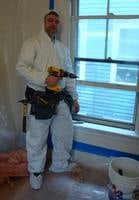 Once you have made the initial determination regarding whether your project is a renovation project or a deleading project, the next question is how to choose a contractor who is licensed and qualified to perform the work. Click on the following link to view a helpful guide on choosing a deleading contractor, “
Once you have made the initial determination regarding whether your project is a renovation project or a deleading project, the next question is how to choose a contractor who is licensed and qualified to perform the work. Click on the following link to view a helpful guide on choosing a deleading contractor, “ Deleading under the MA Lead Law requires the removal or covering of
Deleading under the MA Lead Law requires the removal or covering of  At a recent
At a recent 
 Lead Paint Hazard is a legal term. The following information is from the Electronic Code of Federal Regulations, Title 40: Protection of Environment,
Lead Paint Hazard is a legal term. The following information is from the Electronic Code of Federal Regulations, Title 40: Protection of Environment,  (3) Any chewable lead-based painted surface on which there is evidence of teeth marks.
(3) Any chewable lead-based painted surface on which there is evidence of teeth marks.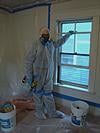 Renovators doing RRP work definitely need to know the difference between renovations and abatement. Unless specifically licenced to do so, renovators are not allowed to do abatement work. Renovators would be wise to make sure property owners know the difference as well. Employees should also be clear on the difference between renovations vs abatement, so as not to misrepresent the work they are doing when discussing a remodeling project with clients and prospects.
Renovators doing RRP work definitely need to know the difference between renovations and abatement. Unless specifically licenced to do so, renovators are not allowed to do abatement work. Renovators would be wise to make sure property owners know the difference as well. Employees should also be clear on the difference between renovations vs abatement, so as not to misrepresent the work they are doing when discussing a remodeling project with clients and prospects.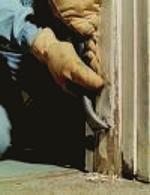 A project resulting in the permanent removal of lead paint hazards, conducted by a company who, through its name or promotional literature, represents, or advertises to be in the business of performing lead paint activities.
A project resulting in the permanent removal of lead paint hazards, conducted by a company who, through its name or promotional literature, represents, or advertises to be in the business of performing lead paint activities. Abatements are not covered by the RRP rule.
Abatements are not covered by the RRP rule.

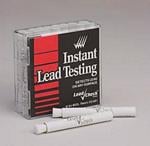 RRP Assessment report or from a Lead Safe Renovator who has used an EPA approved lead based paint test kit to test surfaces for lead, to all tenants or potential buyers.
RRP Assessment report or from a Lead Safe Renovator who has used an EPA approved lead based paint test kit to test surfaces for lead, to all tenants or potential buyers.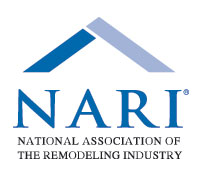 Fortunately for me, in the early days of owning my remodeling business, I learned a lot about lead and lead safe work practices through the NARI/HUD Lead Safe Remodeler training program that came out in the mid 1990’s. The current Certified Renovator training is only one day and really only teaches attendees how to contain the dust and debris. Different than the current class, the NARI/HUD class was two days long and actually thought us lead-safe work practices that eliminated or significantly reduced the creation of lead dust and debris. Attending that class was definitely worth the investment of time and money. Both I and my employees changed the way we thought about the work we did and the methods we used going forward.
Fortunately for me, in the early days of owning my remodeling business, I learned a lot about lead and lead safe work practices through the NARI/HUD Lead Safe Remodeler training program that came out in the mid 1990’s. The current Certified Renovator training is only one day and really only teaches attendees how to contain the dust and debris. Different than the current class, the NARI/HUD class was two days long and actually thought us lead-safe work practices that eliminated or significantly reduced the creation of lead dust and debris. Attending that class was definitely worth the investment of time and money. Both I and my employees changed the way we thought about the work we did and the methods we used going forward. Lead poisoning can occur when people are exposed to large or small amounts of lead over time. Lead builds up in the body and may cause temporary or permanent damage. A blood lead test can show whether your body has absorbed a dangerous amount of lead. A high blood lead level is an indication that lead is building up in the body faster than it can be eliminated.
Lead poisoning can occur when people are exposed to large or small amounts of lead over time. Lead builds up in the body and may cause temporary or permanent damage. A blood lead test can show whether your body has absorbed a dangerous amount of lead. A high blood lead level is an indication that lead is building up in the body faster than it can be eliminated. Later Signs and Symptoms:
Later Signs and Symptoms: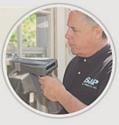 Many remodelers have shared with me that they have been entertaining the idea of become licensed lead inspectors. Recognizing the new EPA RRP rule as here to stay, many see doing inspections as an opportunity to diversify their business's offerings and at the same time add some much needed revenue due to our current economic challenges.
Many remodelers have shared with me that they have been entertaining the idea of become licensed lead inspectors. Recognizing the new EPA RRP rule as here to stay, many see doing inspections as an opportunity to diversify their business's offerings and at the same time add some much needed revenue due to our current economic challenges. Upon successful completion of the examination and a lead physical and blood test, you need to complete an apprenticeship program with a licensed Master Lead Inspector. It costs between $3,000 and $5,000 to do an apprenticeship. You must work with the Master Lead Inspector for a total of 80 hours and you must accompany the Master inspector on 15 inspections. The 15 inspections will consist of 7 Initial Inspections (5 using the XRF gun and 2 using sodium sulfide), 6 re-occupancy reinspections or final deleading reinspections, and 2 PCADs (post compliance assessment determinations).
Upon successful completion of the examination and a lead physical and blood test, you need to complete an apprenticeship program with a licensed Master Lead Inspector. It costs between $3,000 and $5,000 to do an apprenticeship. You must work with the Master Lead Inspector for a total of 80 hours and you must accompany the Master inspector on 15 inspections. The 15 inspections will consist of 7 Initial Inspections (5 using the XRF gun and 2 using sodium sulfide), 6 re-occupancy reinspections or final deleading reinspections, and 2 PCADs (post compliance assessment determinations).  Renovators doing RRP work will be involved with lead testing. Lead testing for RRP related projects can be done by the certified renovator, a certified lead inspector or certified lead risk assessor. The type of testing that can be done by each varies, but regardless of who does the testing written reports are required and, by law, certain individuals must be given a copy of those reports if lead is found. The EPA RRP rule is specific about
Renovators doing RRP work will be involved with lead testing. Lead testing for RRP related projects can be done by the certified renovator, a certified lead inspector or certified lead risk assessor. The type of testing that can be done by each varies, but regardless of who does the testing written reports are required and, by law, certain individuals must be given a copy of those reports if lead is found. The EPA RRP rule is specific about  Regardless of the original purpose of testing (RRP or any other purpose), once a reports exists, the Lead Disclosure Rule below dictates who must receive the reports and when in regards to the selling or leasing of a property. The rule also specifies what documentation must be created and maintained to prove the reports were distributed to the required parties. Because of the considerations of the Lead Disclosure Rule, I recommend renovators get the property owner's written permission prior to conducting any lead testing.
Regardless of the original purpose of testing (RRP or any other purpose), once a reports exists, the Lead Disclosure Rule below dictates who must receive the reports and when in regards to the selling or leasing of a property. The rule also specifies what documentation must be created and maintained to prove the reports were distributed to the required parties. Because of the considerations of the Lead Disclosure Rule, I recommend renovators get the property owner's written permission prior to conducting any lead testing.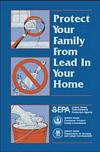 Give an EPA-approved information pamphlet on identifying and controlling lead-based paint hazards ("Protect Your Family From Lead In Your Home" pamphlet, currently available in English, Spanish, Vietnamese, Russian, Arabic and Somali).
Give an EPA-approved information pamphlet on identifying and controlling lead-based paint hazards ("Protect Your Family From Lead In Your Home" pamphlet, currently available in English, Spanish, Vietnamese, Russian, Arabic and Somali). Painting and Coatings Terms and Definitions:
Painting and Coatings Terms and Definitions:


